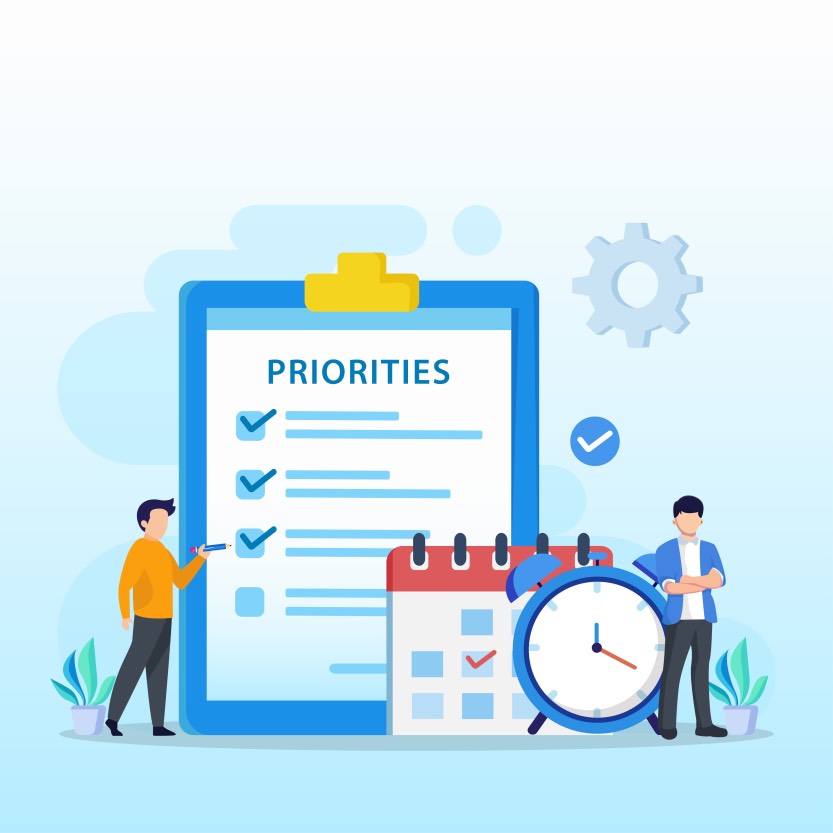It’s no secret that Scrum is great for dealing with functional requirements. But what about non-functional requirements? How should a Scrum team handle them? This blog post will look at how to deal with non-functional requirements in a Scrum environment. Stay tuned!
What Are Non-Functional Requirements?
Non-functional requirements are an important part of any software development project. They define the quality attributes of the developed system and often directly impact the final product’s usability and functionality.
However, non-functional requirements can often be overlooked or given less attention than their functional counterparts. This can lead to problems later in the development process, as these requirements are just as important as functional ones. A development team deal with non-functional requirements in the same way as they would any other type of requirement. To release sprint, the team needs to understand what they are, how they fit into the product being developed, and what needs to be done to meet them.
What Are Some Common Examples of Non-Functional Requirements?
There are many types of non-functional requirements, but some common examples include:
Performance
Regarding performance, non-functional requirements often focus on speed, reliability, and scalability issues. For example, a requirement might state that the system must be able to handle 10,000 concurrent users without crashing. The lead developers would then need to find a way to ensure that the system could meet that performance goal. Even if the system met all the other functional requirements, it would still be considered a failure if it couldn’t handle the required number of users. The integration sprint preceding the release sprint is often used to test and verify performance goals.
Usability
Usability requirements focus on how easy it is for users to interact with the system. For example, a requirement might state that the system must be usable by people with different levels of computer literacy. The development team would need to find a way to make the system usable for everyone, even those unfamiliar with computers. Developers often use user experience (UX) experts to help them meet usability requirements. You must first understand your user base to define system attributes. As the correct answer might vary depending on the users, you don’t want to make assumptions.
Security
Security requirements focus on ensuring the system is secure from unauthorized access and data breaches. They might cover user authentication, data encryption, and network security topics. When the release department understands the security requirements, they can work with the development team to ensure that the system meets them. For example, if the system must comply with certain industry regulations, the release department can work with the development team to ensure that the system meets those standards.
Do you want your Scrum team to meet all of the non-functional requirements?
Contact Growth Hackers
Operability
Operability requirements often focus on availability, serviceability, and recoverability. As a scrum team, you should work with your product owner to ensure that these requirements are well understood and can be measured.
To deal with operability requirements, the scrum team should:
- Make sure that all team members well understand the product backlog items related to operability
- Work with the product owner to ensure that acceptance criteria for these items are clear
- Make sure that operability tests are included in the definition of done
- Monitor operability KPIs during sprints and adjust the product backlog accordingly
Capacity
The development team’s capacity is the number of story points they can deliver in a Sprint. The product owner and Scrum Master help to ensure that the development team has the environment and tools it needs to be successful. They also work with other stakeholders to ensure the team is not disrupted during the Sprint.
The development team should self-organize to determine the best way to deliver the functionality in the sprint backlog. They may do this by splitting user stories into tasks or working on multiple user stories concurrently. You should not be asked to work overtime or weekends unless necessary. This will lead to burnout and will decrease the quality of their work. As the release department, we should also be transparent about our capacity so that the PO knows what he can realistically expect from us.
Reliability
The reliability of a system is often measured by its uptime. Uptime is the percentage of time that the system is available to users. For example, if a system has an uptime of 99%, it is available to users 99% of the time. A system with an uptime of 100% is called five nines reliable.
Reliability is often improved by designing the system to be fault tolerant. This means that if one component of the system fails, the other components can continue to function. For example, a website might have multiple servers, each with its copy of the website’s data. If one server goes down, the other servers can continue to serve the website to users.
Scalability
Scalability is the ability of a system to handle an increasing number of users or an increasing amount of data. For example, a website might need to be scalable to accommodate many visitors during a special event.
When designing a system, it is important to consider how it will scale. For example, a website might be designed to run on a single server. But if the website becomes popular, it might need to be redesigned to run on multiple servers. When the development teams are planning the project, they should discuss how the system will need to scale and what steps will need to be taken to accommodate that. If the system is not designed to be scalable from the start, it can be very difficult and costly to add that functionality later on.
How Can Scrum Teams Deal with Non-Functional Requirements?
There are a few key things that scrum teams can do to deal with non-functional requirements:
Prioritize the requirements
When dealing with non-functional requirements, it is important to prioritize them. Not all non-functional requirements are created equal; some may be more important than others. By prioritizing the requirements, scrum teams can ensure that they are working on the most important ones first. Suppose, for example, and a scrum team is working on a software development project. One of the non-functional requirements of the project is to create software that is easy to use. However, another non-functional requirement is to create secure software. In this case, the security requirement would precede the usability requirement.
Work with stakeholders
When working with non-functional requirements, it is important to involve all relevant stakeholders. This includes product owners, customers, and other stakeholders who have a vested interest in the project. By involving these stakeholders, scrum teams can better understand the requirements and ensure that they are met. When the integration sprint is complete, the team should review the product with stakeholders to ensure that all requirements have been met. Further acceptance criteria can be generated from this review process. Note that some non-functional requirements may not be relevant to all stakeholders. In these cases, it is important to prioritize the requirements and determine which ones are most important to the project’s success.
Create a definition of done
Sometimes, it can be difficult to determine when a non-functional requirement has been met. To help with this, it can be useful to create a definition of done. This is a set of criteria that must be met before a task can be considered complete. Having this definition in place will make it easier for the scrum team to track progress and ensure that all requirements are being met. If your project includes non-functional requirements, discuss the definition of done with your team so that everyone is on the same page.
Use prototypes to elicit and validate non-functional requirements
Prototypes are a common and effective means of eliciting and validating non-functional requirements. Prototyping allows the development team to quickly create a working system model that can be used to collect feedback from stakeholders about the system’s ability to meet their needs.
There are several benefits to using prototypes to gather non-functional requirements:
1. Prototypes can be used to collect feedback about the system’s ability to meet non-functional requirements early in the development process. This feedback can help guide the development team’s decisions about how to design and build the system.
2. Prototypes can be used to validate assumptions about the system’s ability to meet non-functional requirements.
3. Prototypes can be used to identify and resolve issues with the system’s design before the system is built.
Break down the requirements into smaller, more manageable pieces
Another way to deal with non-functional requirements is to break them down into smaller, more manageable pieces. This can help the scrum team better understand the requirements and create a plan for achieving them.
It is important to remember that non-functional requirement are just as important as functional requirements, so the scrum team should give them the same attention and care. Even if the requirements seem daunting, breaking them down into smaller chunks can make them much more manageable and achievable.
If you’re unsure how to break down the requirements, you can ask for help from a product owner or stakeholder. They will likely have a good understanding of the big picture and can guide how to best divide up the work.
Once the requirements are broken down, the scrum team can create user stories and tasks. This will help to further decompose the work and make it more concrete. The user stories and tasks should be small enough to complete within a sprint.

Make sure your Scrum team deals with non-functional requirements!
Be flexible and adaptable as new information arises
Finally, it is important to be flexible and adaptable when dealing with non-functional requirements. As the project progresses, new information may arise that affects the requirements. The scrum team should be prepared to adjust their plans accordingly. It is also important to communicate changes to the stakeholders. They must be kept up to date on the latest developments and allowed to provide feedback.
Stakeholder engagement is critical to the success of any project, but it is especially important when dealing with non-functional requirements. By keeping stakeholders involved and informed, the scrum team can ensure that the project meets their needs and expectations.
Regardless of your approach to dealing with non-functional requirements, it is important to remember that they are just as important as functional requirements. They can have a major impact on the success of your project, so be sure to give them the attention they deserve.
Final Words on How a Scrum Team Should Deal with Non-Functional Requirements
In the end, it is up to the scrum team to devise a way that works best for them when dealing with non-functional requirements. There is no one size fits all solution, and what works for one team might not work for another. The important thing is that the team communicates openly and regularly about the NFRs and how they are handled so that everyone is on the same page.
Growth Hackers is a top-rated growth hacking agency helping businesses from all over the world grow. There is no fluff with Growth Hackers. We help entrepreneurs, business owners, Scrum teams and project managers meet all of the non-functional requirements, increase their productivity, generate qualified leads, optimize their conversion rate, gather and analyze data analytics, acquire and retain users and increase sales. We go further than brand awareness and exposure. We make sure that the strategies we implement move the needle so your business grow, strive and succeed. If you too want your business to reach new heights, contact Growth Hackers today so we can discuss about your brand and create a custom growth plan for you. You’re just one click away to skyrocket your business.







